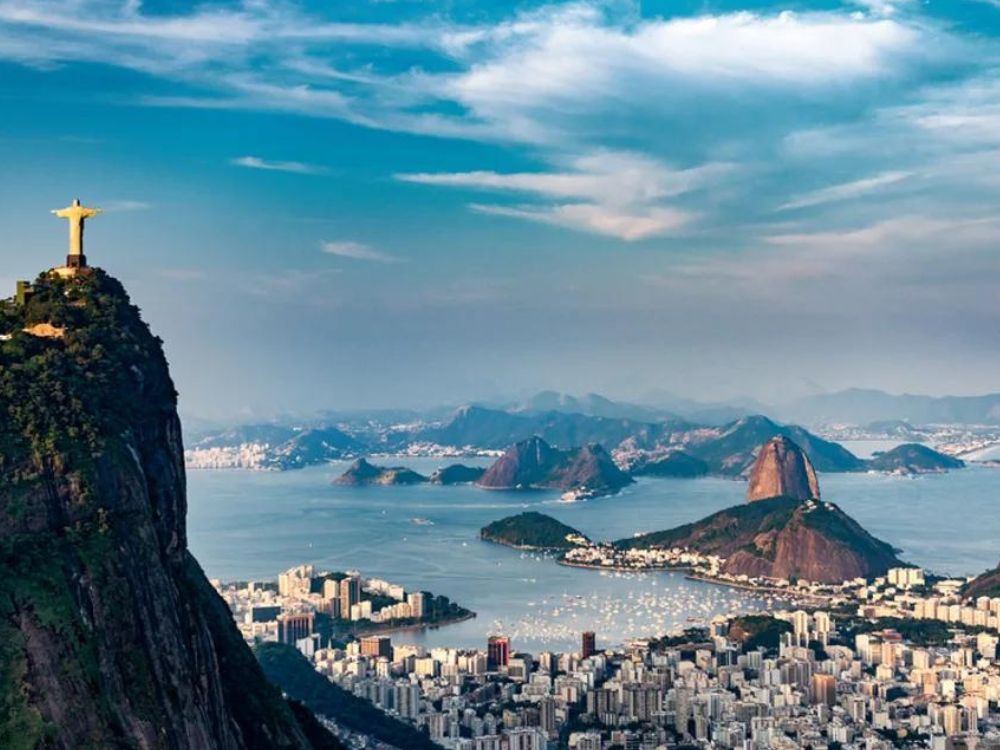
Discover the differences between each of the 27 Brazilian states and how you can choose the perfect place for your vacation.
Brazil and its geographical diversity
Brazil is a country of continental dimensions, with a vast geographical diversity. Its territorial extension ranges from the Amazon Rainforest, to the paradisiacal beaches, passing through the Pantanal and the mountains and metropolises.
This geographical diversity is responsible for a wide variety of landscapes, climates, fauna and flora, making Brazil a unique country in terms of biodiversity. In addition, the different regions of the country present distinct cultural characteristics, with their own traditions, cuisines and customs.
This cultural diversity is one of Brazil’s great treasures. Therefore, for those of you who have never visited Brazil, but have this desire, to understand the right place you should stay in Brazil, we will talk a little more about each place, its characteristics, climate, temperature, tourist spots, advantages and disadvantages. Follow us so you can keep up with all of this.
Brazil is divided into
5 regions, namely: North, Northeast, Midwest, South and Southeast.
In total, among these five regions, Brazil has 27 states, or rather, 26 and the Distrito Federal.
It is very common to find portals referring to Brazil with 27 states. However, it is also normal to find some places saying that it has 26 states and the Federal District. This is due to Brazilian political reasons; in other words, the Federal District has all the characteristics of a state, but for political reasons it is not called that. Therefore, we, from Brazil in the Backpack, will refer to Brazil as having 27 states. However, if you find another place pointing out Brazil with 26 states, know that neither is wrong.
They are:
North Region

The North Region is known for its lush rainforest, the Amazon, and encompasses seven states:
- Amazonas: Home to the city of Manaus, a starting point for exploring the Amazon jungle. It has winding rivers, diverse wildlife, and indigenous communities.
- Pará: It stands out for the Rio Amazonas, which flows into the Atlantic Ocean. Belém, its capital, is famous for the “Ver-o-Peso” Market and the “Círio de Nazaré”.
- Acre: Known for its biodiversity and the city of Rio Branco.
- Roraima: It houses Mount Roraima, a flat-topped mountain and inspiring scenery.
- Amapá: Rich in natural resources and with the city of Macapá.
- Tocantins: It stands out for the Jalapão National Park and the capital, Palmas.
- Rondônia: Known for its forest reserves and cities like Porto Velho.
Northeast Region

The Northeast is famous for its stunning beaches and lively parties. There are nine states:
- Bahia: Salvador, its capital, is a cultural center with colonial architecture and incredible beaches.
- Pernambuco: It stands out for Recife and Olinda, historic cities full of cultural traditions.
- Ceará: Jericoacoara and Fortaleza are popular destinations, with beaches and vibrant nightlife.
- Maranhão: The Lençóis Maranhenses National Park is a must-see attraction.
- Paraíba: João Pessoa offers tranquil beaches and rich history.
- Rio Grande do Norte: Natal and Pipa are known for their beaches and dunes.
- Alagoas: Maceió and its crystal-clear water beaches are a highlight.
- Sergipe: Aracaju is the capital and has beautiful beaches.
- Piauí: The Parnaíba Delta and Teresina are points of interest.
Central-West Region

The Central-West region comprises four states:
- Mato Grosso: The Pantanal, with its rich wildlife, is one of the largest flooded areas in the world.
- Goiás: The capital of Goiás is Goiânia, which is also the largest city in the state and the seat of the Metropolitan Region of Goiânia.
- Mato Grosso do Sul: Also part of the Pantanal, it is known for its natural beauties.
- Distrito Federal: In addition to Brasília, it houses the Brasília National Park and Lake Paranoá.
Southeast Region

The Southeast Region is the most populous and economically developed in Brazil. It encompasses four states:
- São Paulo: The state of São Paulo is a financial and cultural center. Its capital, São Paulo, is a vibrant metropolis with museums, theaters, and a diverse gastronomic scene. In addition, the coast of São Paulo offers beaches like Guarujá, Ubatuba, and Praia Grande.
- Rio de Janeiro: Rio de Janeiro is famous for its iconic beaches, such as Copacabana and Ipanema, as well as Christ the Redeemer and Sugarloaf Mountain.
- Minas Gerais: Known for its rich colonial history, Minas Gerais is home to cities like Ouro Preto, Tiradentes, and Belo Horizonte. The cuisine of Minas Gerais is an attraction in itself.
- Espírito Santo: With beautiful beaches and mountains, Espírito Santo has destinations like Vitória and Guarapari.
South Region

The South Region is known for its colder climate and stunning landscapes. It consists of three states:
- Paraná: Its capital, Curitiba, is famous for its parks and architecture. The Iguaçu Falls, on the border with Argentina, are one of the natural wonders of the world.
- Santa Catarina: Florianópolis, the “Magic Island,” offers paradisiacal beaches. Blumenau is famous for Oktoberfest and its German heritage.
- Rio Grande do Sul: Porto Alegre is the capital. The Serra Gaúcha region, with cities like Gramado and Canela, is known for its vineyards, chocolates, and European architecture.
From here on out, we will explore all these regions, and later, explore city by city. Therefore, keep an eye on this blog to learn more about all the Brazilian regions.
